The black hole
The black hole
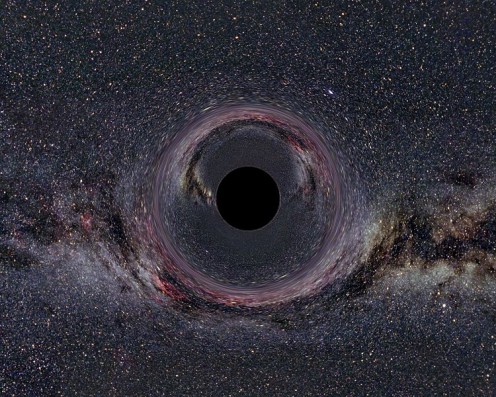
Introduction
The universe that we live in is so diverse and unique, and it interests
us to learn about all the variance that lies beyond our grasp. Within this marvel of wonders our universe holds a
mystery called the black hole. In order to understand what
exactly a black hole is, we must first take a look at the basis for the cause
of the black hole.All black holes
are formed from the gravitational collapse of a star, usually having a great,
massive, core.To understand the black hole we must first understand what a star is.....
unstable star
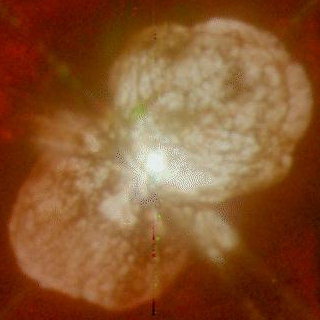
stable star
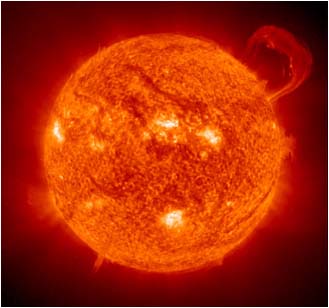
Star
A star is created when huge, gigantic gas clouds bind together due to attractive forces and form a hot core, combined from all the energy of the two gas clouds. This energy produced is so great, that when it first collides, a nuclear reaction occurs and the gasses within the star start to burn continuously. The hydrogen gas is usually the first type of gas consumed in a star and then other gas elements such as oxygen, carbon and helium are consumed. This chain reaction fuels the star for millions or billions of years depending on the amount of gases there are. The star manages to avoid collapsing at this point because of the equilibrium achieved by itself. The gravitational pull from the core of the star is equal to the gravitational pull of the gases forming a type of orbit.
A black hole is formed when a star collapses....
white dwarf
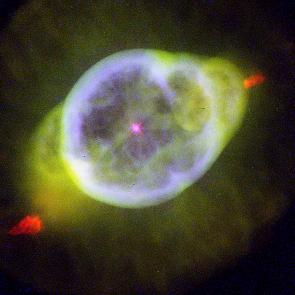
Collapse of a star
Usually if a star is small in mass most, of the gases will be consumed and some of it escapes. This occurs because there is not tremendous gravitational pull upon those gases and hence the star weakens and becomes smaller. This is called as a white dwarf.
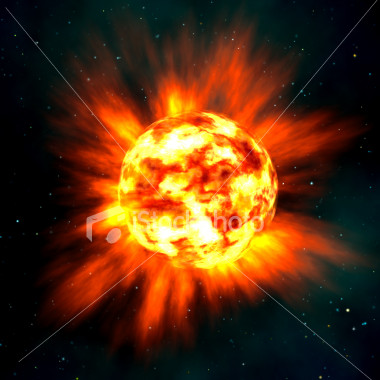
However if a star has to have large mass, the nuclear fusion within the star simply goes out of control causing the star to explode. This is called a supernova. After exploding a fraction of a star may be usually left and that star is known neutron star. If the core of the star is massive (three times the size of the sun) then it becomes a black hole. Gravity forces the core to collapse. As the core shrinks, its gravity increases. At a certain point it reaches a critical size called the event horizon.
The event horizon
The event horizon is the boundary of the black hole, beyond which nothing can escape, not even light. Black holes are black because no light or radiation can escape its gravitational field. Once inside the event horizon, every particle is dragged towards the core and it collapses or torn apart due to tidal effect. Beyond this event horizon lies the collapsed core of the star. The star is a singularity with a point mass of infinite density.
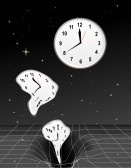
Inside a black hole
Inside the black hole, the star is a singularity. This is a single point for non-rotating black holes and for rotating black holes, it is smeared out in the form a ring shape lying in the plane of rotation. Inside a black hole space and time are highly distorted. Imagine a clock falling into a black hole. First it appears to be normal but as it gets nearer to the black hole the time taken between the ticks becomes infinity and its wavelength expands giving it a redder appearance to the outside observer. But the clock will be ticking as usual until it gets torn apart by tidal forces as it reaches the event horizon.
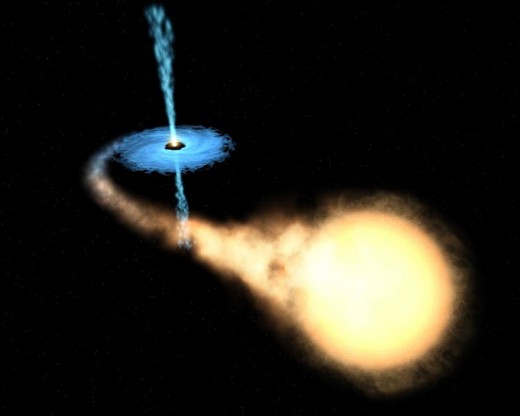
Accretion disc
The gravitational field of the black hole is very high and when any star is close enough to the black hole it is affected by its gravitational field. The gases of the star which is nearer to a black hole is torn apart and rapidly swirls around the black hole forming the accretion disc. As the materials are pulled closer to the hole, it travels faster and faster, and becomes very hot from friction. Close to the hole, the material is so hot it emits X-rays before crossing the event horizon and disappearing forever.
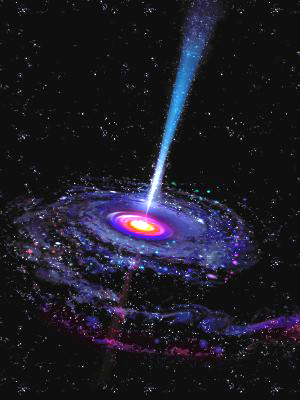
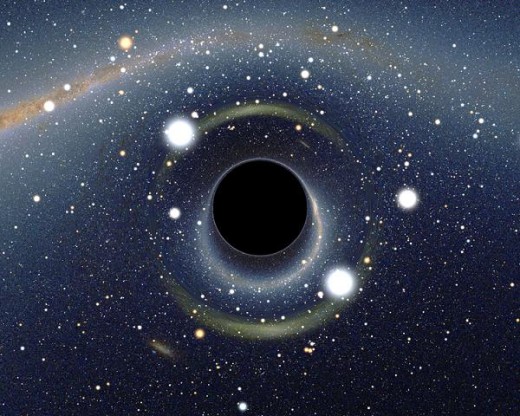
Detection of black hole
Black holes are neutron stars that does not give light and hence cannot be seen directly. However, astronomers can find black holes and neutron stars by observing the gravitational effects on other objects nearby.
· x-rays- The intense gravity from a black hole or a neutron star will pull in dust particles from a surrounding cloud of dust or a nearby star. As the particles speed up and heat up, they emit x-rays. So the x-rays don't come directly from the black hole or neutron star, but from its effect on the dust around it. Although x-rays don't penetrate our atmosphere, astronomers use satellites to observe x-ray sources in the sky.
· Rotating stars- Many stars rotate around each other, much as the planets orbit our Sun. When astronomers see a star circling around something, but they cannot see what that something is, they suspect a black hole or a neutron star.
Cygnus X-1 was the first candidate for the black hole.
- Essay on Black Hole
check this out if u want an essay about the black hole
Conclusion
Thus a black hole is one of the marvels of space whose complete information is still not known due to the various problems in experimenting, but still research is taking place for a complete answer.




